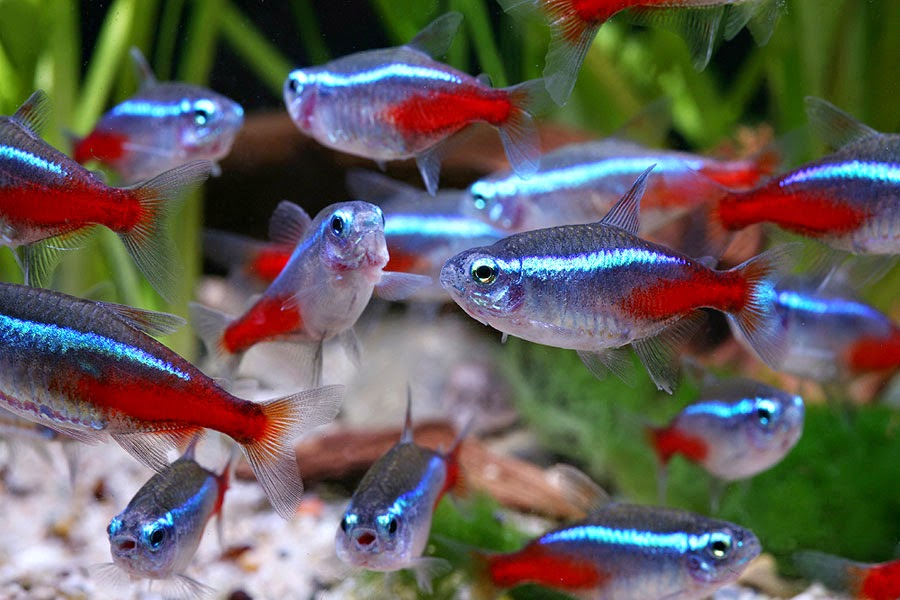

Must be signed into your Treats account prior to purchase. Offer valid with Treats membership online only at or on the app. Save $10 off your first purchase of $50 or more in Pharmacy. Points will be credited to your Treats account within 24 – 72 hours of your purchase. May not be combinable with other available bonus points offers. Must be signed in to your Treats account prior to purchase or use Treats membership ID in stores at checkout. Must activate offer prior to purchase to receive bonus points. Prices & selection may vary by store & online.
#GLOW NEON TETRA SERIES#
This is the first of a new series “From Lab to Market”, showcasing how ideas and innovation at the University make the leap beyond lab benches to your everyday life.5X Bonus points offer on all Nate + Jeremiah collections valid one-time only 9/25/22-10/31/22 with Treats membership in stores & online. I am even prouder that the GloFish has become teaching material in classrooms, museums and aquariums for public education in topics ranging from classical genetics to modern biotechnology.” Looking back at how far his creation has gone from an idea in the lab to making waves commercially across the US, Prof Gong said, “I am very proud that our technology has become an established tool to develop novel varieties of ornamental fish and how it created a new and growing industry in the pet market. His team determined that it is in fact two non-sex hormone factors - cortisol and serotonin - that appear to play critical roles in male-biased liver cancer. While this suggested a role by sex hormones, clinical trials targeting them did not produce convincing results. Most recently, his team of biologists unravelled a mystery in the treatment of liver cancer, a sex-biased disease that occurs more frequently in males than females. He chose to work with zebrafish given its many advantageous features - the fish is small, easy to care for, produces an abundance of offspring, and its embryos are transparent for easy observation. Zebrafish is a recurrent feature in Prof Gong’s large body of research work spanning two decades. He later developed several strains of genetically modified zebrafish that show fluorescent colours only after exposure to specific chemical pollutants, such as oestrogenic compounds, heavy metals and dioxins.

Prof Gong Zhiyuan (third from left) and the team that created the fluorescent zebrafish in 1999īack in Singapore, Prof Gong continued his work on the zebrafish. The licensing arrangement also meant the University continues to receive royalties from the sale of the fish. The fish is available in green, orange, purple and yellow as well. GloFish hit the American consumer market in late 2003 and the idea of a luminescent ornamental fish soon captured the imagination of ornamental fish enthusiasts.

The first fluorescent zebrafish marketed was red, which incorporated a bright red gene from the sea anemone. Texas-based Yorktown Technologies soon came knocking on Prof Gong’s door and a licensing deal was struck for the use of NUS’ technology to create their proprietary GloFish. It actively connects and partners with industry, faculty and research centres to commercialise the University’s innovations into products and services that benefit businesses and the wider society. NUS Industry Liaison is an integral part of NUS Enterprise and the technology transfer community. With the help of NUS Industry Liaison, Prof Gong successfully filed a patent for the technology and its application in ornamental fishes. “As I was also trained in aquaculture research, and was cognisant of Singapore’s standing as one of the world’s largest ornamental fish exporters, I immediately recognised the potential of the product in the ornamental fish industry.” “After we created the fluorescent transgenic zebrafish, the fluorescent color was so strong that it could be viewed comfortably with the naked eye,” recounted Prof Gong. Prof Gong, who is also with the NUS Environmental Research Institute, wanted to develop zebrafish that look just like its ordinary black-and-silver striped peers, but would glow in response to toxins in the waters as a means to detect and fight environmental pollution. In fact, making zebrafish fluorescent was merely the first step to his vision of using the 2.5cm fish as the underwater equivalent of the canary in a coal mine.

Prof Gong had not originally set out to create ornamental fishes for the aquarium. Almost 20 years after NUS Biological Sciences Professor Gong Zhiyuan first inserted a fluorescent jellyfish gene into zebrafish, the technology behind the iridescent fish is going places, most recently culminating in the sale of the US company behind GloFish, the first transgenic pet fish, for a reported US$50 million.


 0 kommentar(er)
0 kommentar(er)
